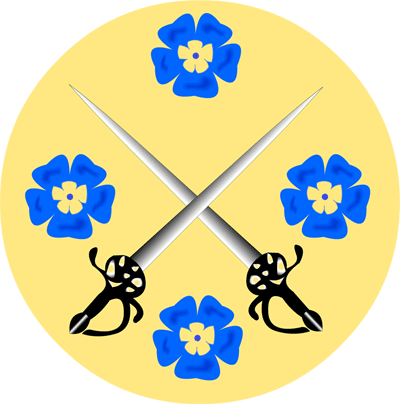Learning To Call Blows
A number of very good articles have been written on realistic blow calling, and why it is important to calibrate. This missive is not intended to offer a different view, but to provide some practical techniques to calling blows correctly.
Blow calling is the most difficult aspect of our martial art. Good blow calling is about 70% feel, 25% sight, and 5% awareness. It involves a knowledge of anatomy, the mechanics of a sword, and honesty with yourself.
Whenever any one of us fight in a tourney, and a thrust lands, the immediate question we ask ourselves is; “Is there any reason that was not a good shot?” We are competitive by nature, and it is only human to want to not lose. This is the toughest part of the battle, to be honest with yourself, and say; “No, that was a killing blow.” Conquer this, and you will never have a problem with blow calling.
The sport of fencing has one advantage over duello in the respect of honesty. Fencers have a machine or someone else to worry about whether a blow was good. This allows them to concentrate 100% on their attack and defense. A duelist does not have this luxury. No matter how much you want to concentrate solely on your attacks, you must remain aware of your body. Everyone occasionally forgets, and literally does not “feel” a blow. This is an honest mistake, and should be forgiven, IF it is truly a rare occurrence. If winning means so much to you, that on the field, winning is the only thing you can think about, try fencing, duello is not for you. Being honest in this regard means sacrificing a small edge of ability in the interest of fairness, and honor.
Now that I have waxed philosophic, lets get practical.
- Rule 1: If you have to think about any shot for more than a second or two, it was probably good.
- Rule 2: When in doubt, see Rule 1.
Light Blows: A light blow is any blow that touches your armor, but you didn’t actually feel the point on your body. Generally, if you can feel the point, the blow was good. So much depends on the blade that landed the blow. This is why we calibrate.
Slaps: Unless you are very experienced, the difference in feel between a slap and a thrust is almost impossible to tell. The only real way to distinguish is to watch the direction from which the blow came. Arcing shots (ones that are not delivered from an on-line attack) can be slaps depending on where they land.
Skips: A blow that lands and bounces. Skipping blows are more often good than not. Blows that skip are on line enough so they aren’t flat against your body, and hard enough to produce a 2” bend if the blade hadn’t bounced. Remember, we are pretending to use real rapiers. A real rapier does not skip. The first place it lands, is where it enters your body. If you get hit by a skipping shot, remember where it hit first, and react accordingly.
Flats: A flat blow is one that has been thrown from way off line. These require you to see how the blade landed against your body to determine. You can get a huge bend in a blade with a flat blow, but it still is not a good shot. With a flat blow, you either feel the point and the blade simultaneously, or the point and then the blade rolling across your body. The tip will have no push to it when it lands, as all the force is sideways. Flats can be tricky to call, if in doubt, call it good.
Anatomy: Blows do different things depending on the angle at which they are delivered. A blow to the shoulder may cost an arm or it may puncture a lung depending on the angle. This is too large a topic for this missive, so all I will say is: “Learn your anatomy.”
Never hesitate to ask your opponent about the shot that he (or she) just landed. Admitting you are not certain will do more to keep a good reputation, than fighting until the blow that cannot be questioned.
Lord Kirk Dragomani
Provost, Ad’E
